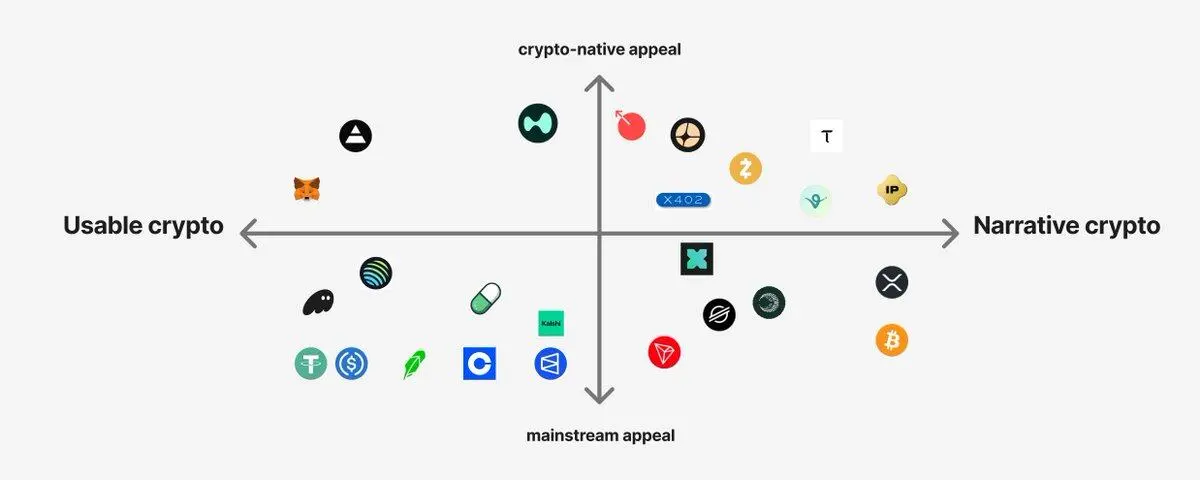Written by: Charlie Little Sun
If you are following the fintech, crypto, or AI circles, you must have seen the term "x402" everywhere.
A number of internet giants have entered the agentic payments "intelligent payments" arena: Coinbase and Cloudflare have teamed up to establish the x402 Open Foundation, Google has integrated crypto scaling into its AP2 standard, and even the usually steady Adyen has rolled up its sleeves to join in. Visa's TAP promises to achieve interoperability, while Stripe and OpenAI have collaborated to make ACP and "instant checkout" the industry standard.
An almost forgotten internet status code—402 "Payment Required"—has surprisingly become the key to determining the next generation of AI agent business models.
In fact, this undercurrent has been brewing within the payments circle for over half a year.
Back in February, when I wrote the article "AI Agents: The Next Frontier Reshaping the Future of Payments" on Substack, I noticed that star projects like Skyfire and Payman, which have raised millions in seed funding, are backed by payment giants from Web2 and Web3 like Visa and Coinbase, who have been laying the groundwork in this field.
Moreover, companies like Stripe, Visa, and PayPal have mentioned the prospects of combining AI agents with payments in their annual reports, albeit with limited coverage.
However, in recent weeks, x402 has truly gone mainstream, thanks to the significant moves by AI giants and fintech behemoths. The x402 itself, along with the broader trend of intelligent agents in business, has finally attracted the attention of a wider tech and investment community.
Many commentators have pointed out its origin from the HTTP 402 status code and analyzed how the rising intelligent AI and increasingly mainstream crypto technology have fueled this topic.
But they generally overlook a fundamental driving force: what is the real motivation behind this AI + crypto wave?
The starting point is the survival crisis of AI companies.
On the surface, everyone is talking about "agents finally being able to make payments autonomously," and envisioning what new skills future AI agents could unlock.
However, from my discussions with a prominent investor in Silicon Valley, the true source of this demand pain point actually stems from the survival pressures faced by large model companies like OpenAI and Anthropic.
While they tell capital markets stories of a trillion-dollar future, they are also watching copyright lawsuits pile up and public skepticism about the ethics of their training data grow. If they cannot establish a scalable, automated way to compensate for the data and databases they scrape, subsequent financing and massive capital expenditures will face pressure.
One narrative I heard is that OpenAI's Sam Altman reached out to Coinbase's Brian Armstrong—both coming from the YC ecosystem. This might also explain why Coinbase briefly launched the AgentKit product earlier this year. It was a developer toolkit that included support for the OpenAI SDK, enabling agents to have trading capabilities.
However, AgentKit did not last long—it was taken offline quickly. Not because the intuition was wrong, but because the paths diverged, and the strategic focuses of the two companies quickly went in opposite directions.
Perhaps under pressure from Perplexity and Shopify's collaboration, OpenAI's growth strategy began to lean towards consumer e-commerce—becoming the interface for people to discover and purchase products—thus favoring a checkout solution that merchants could adopt without major upheaval.
On the other hand, Coinbase, due to the GENIUS Act and a series of crypto regulatory actions in the U.S., gradually shifted its ambition towards internet currency infrastructure, naturally pushing it towards "machine-to-machine" traffic, where no accounts are needed, and robots pay directly to pages or interfaces.
Through first principles, we can see the four major camps formed by the giants entering the fray.
Although AgentKit was short-lived, it laid the groundwork for Coinbase's subsequent upgraded version—x402—and opened new avenues for other major players.
It is precisely because of the original driving force mentioned above that we can better understand the competitive and cooperative relationships among the camps formed by the giants through this first principle:
Stripe × OpenAI: Capturing Consumer Scenarios, Achieving "Smooth Upgrades"
The ACP protocol jointly built by OpenAI and Stripe has introduced instant checkout in ChatGPT. Essentially, it is an "elegant upgrade" to the existing payment network.
Stripe issues a shared payment token for specific orders and merchants, which agents carry to complete transactions, while merchants continue to use familiar fraud prevention, refund, and tax processes—without needing to reorganize teams or retrain.
Etsy has already integrated this, and Shopify is in line waiting. The core of this strategy lies in leveraging existing channels and usage habits: seamlessly embedding agent transactions into the payment pipeline that merchants have already established.
Coinbase × Cloudflare: Targeting the Machine Economy, Achieving "Underlying Reconstruction"
Coinbase's upgraded x402 ambition is even more thorough. It makes the "402 Payment Required" status code in the HTTP protocol executable: the server declares the price and accepted tokens, and the client completes the payment (preferably using the beloved USDC on the Base chain) and continues operations with proof. No accounts, logins, or monthly bills are required.
This solution shines in micro-payment scenarios ranging from $0.01 to $0.1—such as per-call API usage, per-article context retrieval, and per-use analysis tools—mirroring the early demo of its investment Skyfire.
Cloudflare's previously launched "pay-per-crawl" has paved the way for this, and Coinbase's strong entry has united key players like AWS, Circle/USDC, NEAR, and notably—Anthropic, which can be seen as the perfect substitute for OpenAI.
Compared to OpenAI's direction towards consumer shopping, Anthropic's core strategy, the MCP framework, focuses on enabling agents to discover and call tools on demand, making its economic model naturally compatible with x402's "pay-per-request," far superior to consumer-facing settlement.
Google × Adyen: Setting Rules, Ensuring Compliance and Auditing
Google's AP2 standard aims to tackle the most challenging authorization issues in the payment system. It binds user intent (such as price limits, frequency restrictions, and category ranges) to specific actions through a set of signed authorization instructions. This design is inherently agnostic to payment channels and includes a crypto extension, allowing agents to seamlessly connect to the x402 link when processing very small payments while maintaining complete audit trails.
Additionally, the involvement of payment giant Adyen means that from day one, this system possesses enterprise-level dispute resolution and compliance capabilities.
Visa TAP: Not Creating New Tracks, but Being Inclusive
Visa's TAP does not attempt to rebuild the payment tracks but plays a crucial compatibility role: helping issuers and acquirers identify agent transaction traffic and applying unified risk and dispute rules.
The key lies in its interoperable positioning—TAP clearly states it will align with the ACP of the Stripe + OpenAI camp and interconnect with the x402 of the Coinbase + Cloudflare camp, truly embodying its Network of Networks positioning, ensuring its invincibility.
With Mastercard's "Agent Pay," you will find that card brands are guiding standard convergence rather than erecting walls around agent commerce.
Although these solutions seem to be fighting their own battles, they are actually forming a cooperative division of labor, layer upon layer of complementarity in practice:
Authorization Layer: The AP2 standard from the Google + Adyen camp provides verifiable credentials of user intent, becoming the "pass" for all operations.
Execution Layer:
For consumer shopping, the OpenAI + Stripe camp uses ACP + traditional card networks for a smooth experience.
For machine-to-machine micro-payments, the Coinbase + Cloudflare camp uses x402 + cryptocurrency for extreme cost efficiency.
- Coordination Layer: Visa's TAP and others inform banks in the background, "This is an agent transaction, not fraud," ensuring smooth processes.
A typical scenario might be: your travel agent first uses x402 to spend 2 cents querying multiple airlines' ticket prices (subject to AP2 authorization constraints), and upon your confirmation, it switches to the ACP channel to complete the ticket purchase, while TAP simultaneously informs the bank. The same task, two payment tracks, one set of audit logs.
In this future system, interoperability will be a core element, which is why the most important point emphasized by various industry participants at last week's Federal Reserve Payment Technology Conference was the interoperability of future payment systems.
Who will be the winner in the grand arena of agentic payments?
Existing giants have won the first round because identity verification, fraud, refunds, taxes, and dispute resolution are all scale games. ACP/TAP/AP2 directly connect to the mature systems that reassure CFOs.
But if we return to the original motivation that sparked this whole thing: OpenAI's attempt to pay content owners. In fact, such an interconnected agent business ecosystem also benefits "long-tail" participants.
Long-tail participants win in scenarios where unit amounts are extremely small, and previously cumbersome processes would stifle transactions: per-request APIs, per-article context retrieval, per-use tools.
Many startups are emerging as added-value areas outside the three basic layers mentioned above—such as the glue layer, building cross-protocol identity + payment solutions, allowing small teams of two or three people to implement metered billing without setting up a billing department (doesn't that sound a lot like Stripe's original value proposition?).
Furthermore, if we think beyond the online space—when we start to realize that the biggest limiting factor for AI is actually the real world, I believe there are at least three areas where agents combined with x402/AP2/ACP/TAP will significantly change economic models:
The Revolution of Prediction Markets and Oracles: If DeFi oracles adopt AP2 authorization + x402 payments, it will incentivize data sources to provide more real-time and higher-quality data, fundamentally enhancing market efficiency and liquidity, allowing the recently popular prediction markets to unlock greater possibilities.
AI Data Centers and Grid Resilience: The demand for training computing power fluctuates dramatically; edge storage devices and EV fleets can sell surplus electricity to data centers via x402 on a per-second basis, transforming rough "power restrictions" into precise "bidding markets."
Climate Data and DePIN: Thousands of sensors can become data centers, selling readings of air quality, temperature, flood levels, etc., to municipal agencies or insurance companies via x402 on a per-request basis, with AP2 authorization ensuring the scope of data usage, and all transactions being auditable.
Conclusion: The Victory of Collaborative Division of Labor
Looking back to the starting point, OpenAI and others initially just wanted to solve the "original sin of copyright"—to pay a fair price for the data used.
But the ultimate answer is not a single technological breakthrough, but rather a subtle industrial division of labor:
OpenAI + Stripe's ACP makes large-scale, compliant consumer transactions possible.
Coinbase + Cloudflare's x402 provides the infrastructure for fragmented payments in the machine economy.
Google + Adyen's AP2 establishes trusted authorization and auditing standards.
Visa's TAP alleviates concerns within the traditional financial system.
Coinbase's deep binding with Anthropic ultimately stems from the natural fit of the MCP and x402 microeconomic models; OpenAI's choice to focus on consumer scenarios with Stripe is because that is where growth can be seen fastest and trust can be established. Both started from the same pain point, chose different battlefields, and ultimately wove together a more resilient ecological network.
For startup teams, the value-added layers and services formed outside the core structure of "authorization - execution - coordination" based on these four camps present good opportunities for entry.
Even beyond the online realm, areas such as the ability of prediction markets and oracles to reflect real-world data, the power demands of AI data centers, and the demand for weather data due to climate disaster risks are all significant opportunity fields.
If there are any copyright disputes regarding the reprinted article, please contact us for removal.
免责声明:本文章仅代表作者个人观点,不代表本平台的立场和观点。本文章仅供信息分享,不构成对任何人的任何投资建议。用户与作者之间的任何争议,与本平台无关。如网页中刊载的文章或图片涉及侵权,请提供相关的权利证明和身份证明发送邮件到support@aicoin.com,本平台相关工作人员将会进行核查。




